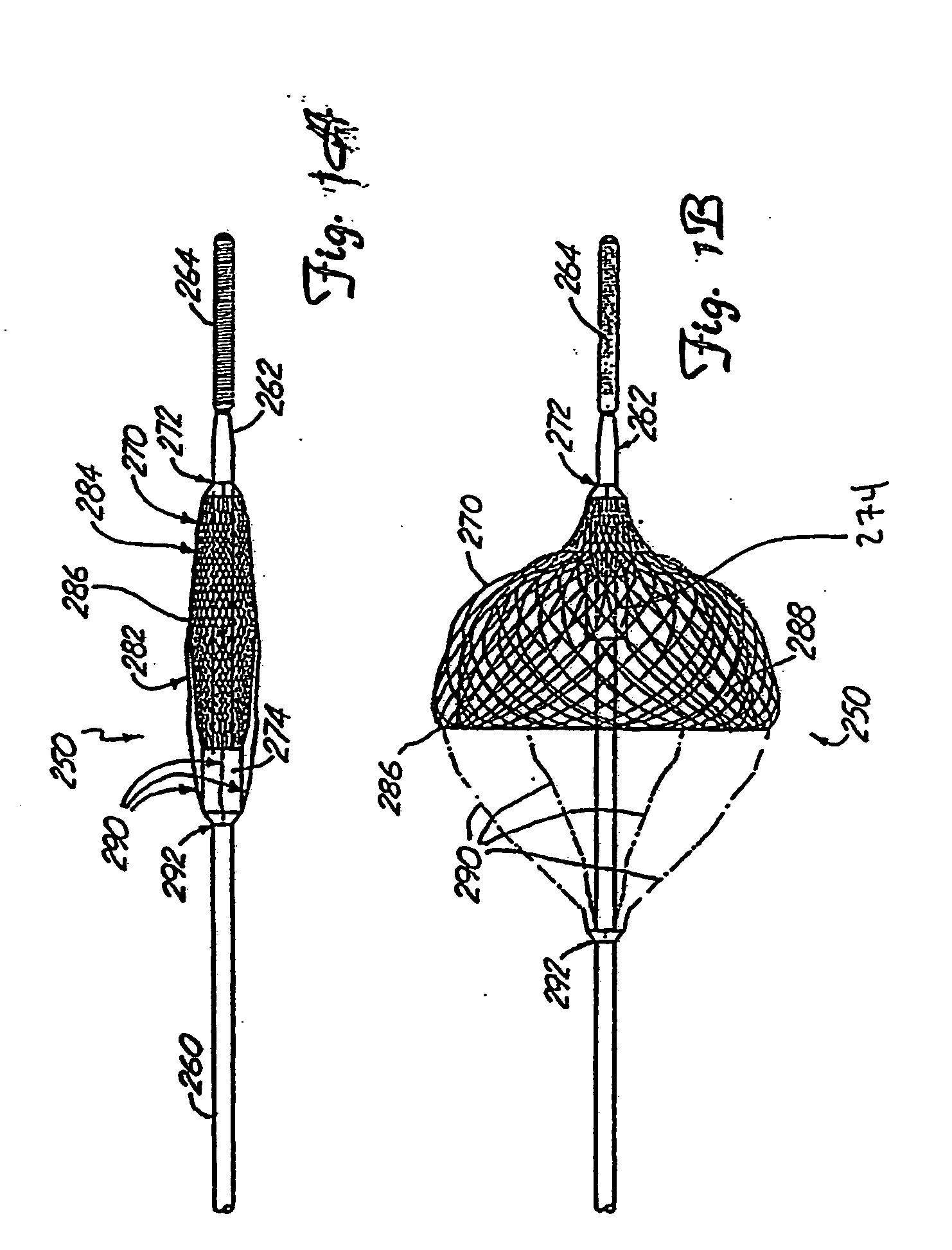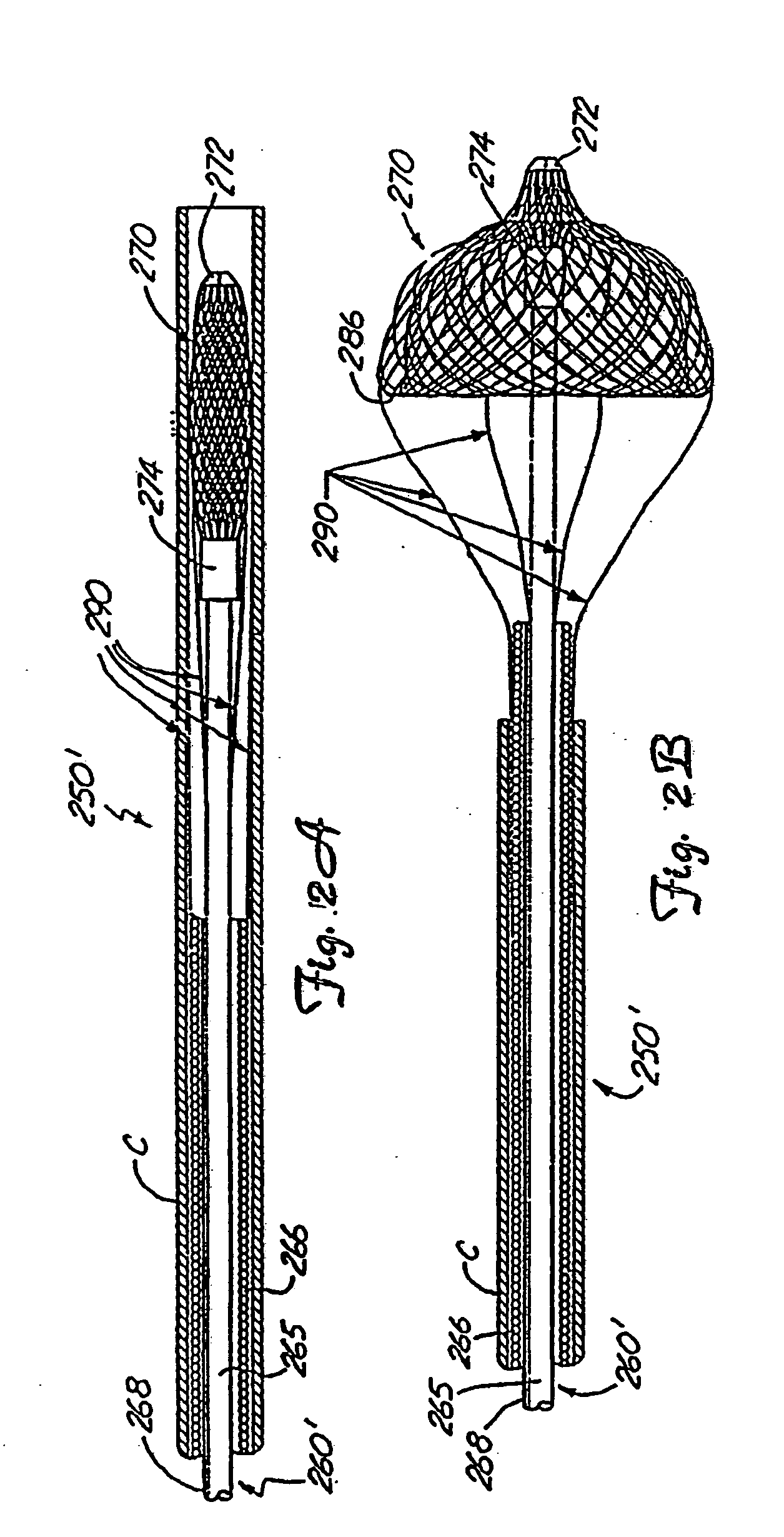Minimally invasive medical device deployment and retrieval system
a medical device and minimally invasive technology, applied in the field of minimally invasive surgical procedures, can solve the problems of affecting reducing the efficiency of surgical procedures, so as to effectively trap any emboli or other materials retained
- Summary
- Abstract
- Description
- Claims
- Application Information
AI Technical Summary
Benefits of technology
Problems solved by technology
Method used
Image
Examples
Embodiment Construction
[0066]FIGS. 8-12 schematically illustrate the operation of one embodiment of the present invention. FIG. 8 illustrates certain operative portions of the medical device retrieval system 10 of the invention in a fully deployed state. As noted above, the retrieval system of the invention is intended to be used in connection with a medical device having a working element carried by flexible, elongate shaft. In these drawings, the medical device is typified as a vascular trap similar to the vascular trap 250 of FIG. 11, but omitting the tethers 290. The working element of this medical device is a basket 12, which may be substantially as outlined above in connection with the description of the basket 270. The shaft in this design may simply comprise a guidewire 14. While the construction and operation of the basket 12 may be substantially the same as that outline for the baskets shown in FIGS. 1-5, it is generally preferred that the proximal band 13 of this basket be attached to the guide...
PUM
 Login to View More
Login to View More Abstract
Description
Claims
Application Information
 Login to View More
Login to View More - R&D
- Intellectual Property
- Life Sciences
- Materials
- Tech Scout
- Unparalleled Data Quality
- Higher Quality Content
- 60% Fewer Hallucinations
Browse by: Latest US Patents, China's latest patents, Technical Efficacy Thesaurus, Application Domain, Technology Topic, Popular Technical Reports.
© 2025 PatSnap. All rights reserved.Legal|Privacy policy|Modern Slavery Act Transparency Statement|Sitemap|About US| Contact US: help@patsnap.com



